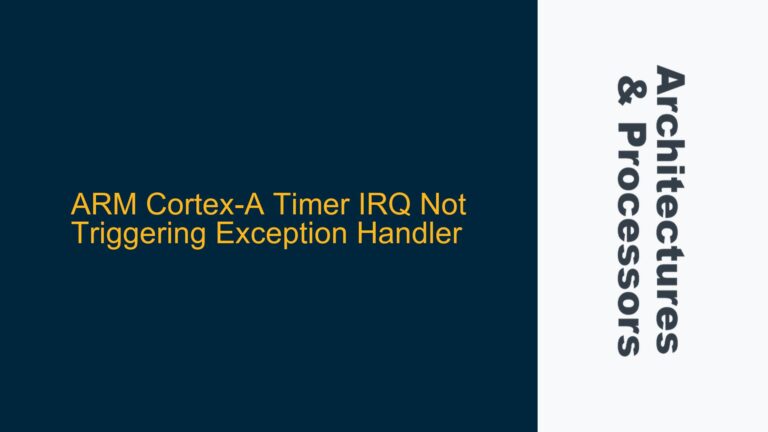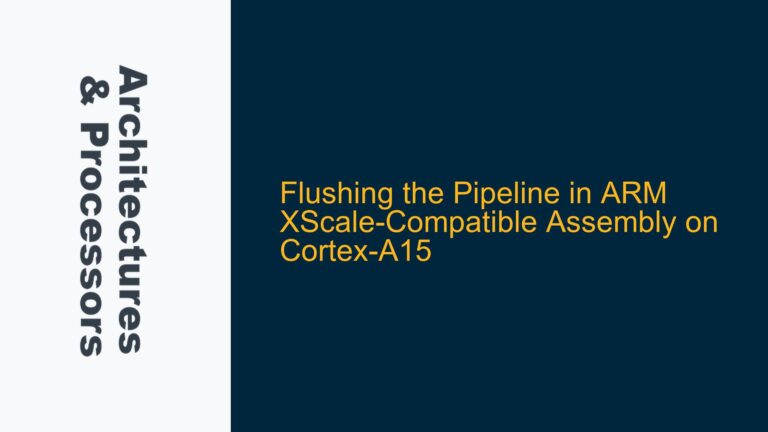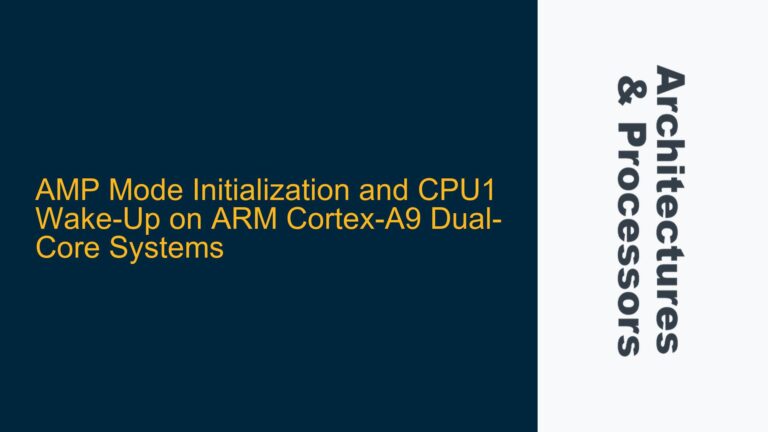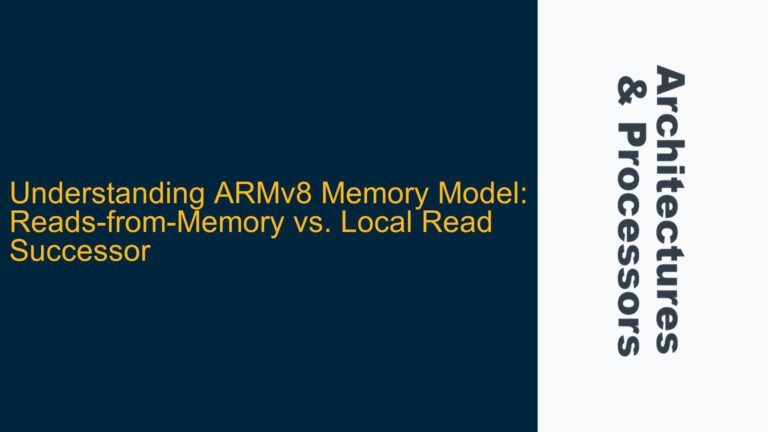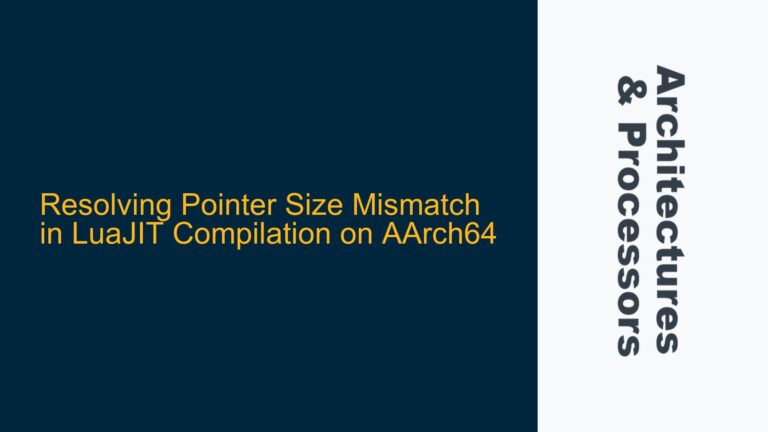ARM Cortex-M0 External Memory Interface Limitations and Requirements
The ARM Cortex-M0 is a highly efficient, low-power processor designed for embedded applications. However, its simplicity comes with certain limitations, particularly when interfacing with external memory devices such as E2PROM, PROM, or SRAM. The Cortex-M0 lacks a dedicated external memory interface (EMIF), which complicates the integration of high-density memory for applications requiring large data storage, such as audio decoding or data logging.
The primary challenge lies in the Cortex-M0’s reliance on the AHB-APB bridge for peripheral communication. The AHB-APB bridge is designed for low-speed peripherals and does not natively support high-speed memory access. This becomes a bottleneck when attempting to interface with external memory devices that require fast, sequential data access, such as SRAM or E2PROM. Additionally, the Cortex-M0’s 32-bit architecture is often underutilized when interfacing with 8-bit or 16-bit memory devices, leading to inefficiencies in data transfer rates.
To achieve high-density data storage, developers must carefully consider the memory access patterns and the limitations of the Cortex-M0’s bus architecture. For instance, streaming data applications, such as audio decoding, require sequential access to large blocks of memory. This necessitates a memory interface that can handle continuous data transfers without introducing significant latency or requiring frequent wait states.
Memory Access Latency and Bus Arbitration in Cortex-M0 Systems
One of the critical issues when integrating external memory with the Cortex-M0 is managing memory access latency and bus arbitration. The Cortex-M0’s AHB bus is shared among multiple peripherals, and the lack of a dedicated memory controller means that memory access requests must compete with other peripherals for bus bandwidth. This can lead to increased latency and reduced performance, particularly in applications requiring real-time data processing.
The AHB-APB bridge introduces additional latency due to its protocol conversion overhead. When accessing external memory, each read or write operation must traverse the AHB-APB bridge, which can introduce several clock cycles of delay. This delay is exacerbated when using slower memory technologies such as E2PROM, which typically require wait states for reliable operation. Even with faster memory technologies like SRAM, the lack of a direct memory interface can limit the achievable data transfer rates.
Bus arbitration further complicates memory access in multi-peripheral systems. The Cortex-M0’s AHB bus uses a round-robin arbitration scheme, which can lead to unpredictable access times for memory operations. This unpredictability is particularly problematic in real-time applications, where consistent memory access latency is critical for maintaining system performance.
To mitigate these issues, developers must carefully design the memory interface to minimize bus contention and optimize data transfer efficiency. This may involve using DMA (Direct Memory Access) controllers to offload memory transfer tasks from the CPU, or implementing custom memory access routines that prioritize critical data transfers.
Optimizing External Memory Integration for Cortex-M0-Based Systems
To successfully integrate external memory with a Cortex-M0-based system, developers must address several key challenges, including memory mapping, access timing, and data transfer optimization. The following steps outline a comprehensive approach to achieving efficient and reliable external memory integration:
Memory Mapping and Address Decoding
The first step in integrating external memory is to define a memory map that accommodates both the internal and external memory resources. The Cortex-M0’s memory map is divided into several regions, including code, SRAM, and peripheral spaces. External memory devices must be mapped into one of these regions, typically the external RAM or external device regions.
Address decoding logic is required to translate the Cortex-M0’s memory access requests into the appropriate signals for the external memory device. This logic can be implemented using discrete logic gates or a programmable logic device (PLD). The address decoder must be designed to handle the specific addressing requirements of the external memory device, including bank selection and page addressing.
Timing and Wait State Configuration
External memory devices often require specific timing parameters for reliable operation. These parameters include access time, hold time, and setup time, which must be matched to the Cortex-M0’s bus timing. The AHB-APB bridge introduces additional timing constraints, which must be accounted for when configuring the memory interface.
Wait states may be required to accommodate slower memory devices, such as E2PROM. These wait states can be configured using the Cortex-M0’s bus controller or implemented in hardware using a wait state generator. Careful timing analysis is required to ensure that the memory interface meets the timing requirements of both the Cortex-M0 and the external memory device.
Data Transfer Optimization
Optimizing data transfer efficiency is critical for achieving high-performance memory access. This can be achieved through several techniques, including burst transfers, DMA, and memory access prioritization.
Burst transfers allow multiple data words to be transferred in a single bus transaction, reducing the overhead associated with individual read or write operations. The Cortex-M0’s AHB bus supports burst transfers, but the external memory device must also support this feature.
DMA controllers can be used to offload memory transfer tasks from the CPU, allowing the Cortex-M0 to focus on processing tasks while the DMA controller handles data transfers. This is particularly useful in streaming data applications, where large blocks of data must be transferred between memory and peripherals.
Memory access prioritization can be implemented using custom bus arbitration logic or software-based prioritization schemes. This ensures that critical memory access requests are serviced promptly, reducing the impact of bus contention on system performance.
Example Implementation: Integrating 72Mbit SRAM with Cortex-M0
To illustrate the principles discussed above, consider the integration of a 72Mbit SRAM device with a Cortex-M0-based system. The SRAM device has a 16-bit data bus and requires a 23-bit address bus for full memory addressing.
The memory map for this system might allocate the external SRAM to the Cortex-M0’s external RAM region, starting at address 0x60000000. Address decoding logic is implemented using a PLD, which translates the Cortex-M0’s 32-bit address bus into the 23-bit address bus required by the SRAM device.
Timing analysis reveals that the SRAM device has an access time of 55ns, which corresponds to three wait states at the Cortex-M0’s 48MHz clock frequency. The wait state generator is configured to insert three wait states for each memory access, ensuring reliable operation.
Data transfer optimization is achieved using burst transfers and a DMA controller. The DMA controller is configured to handle data transfers between the SRAM and a peripheral device, such as an audio codec. Burst transfers are used to transfer 16 words of data in a single bus transaction, reducing the overhead associated with individual read or write operations.
Conclusion
Integrating external memory with an ARM Cortex-M0-based system presents several challenges, including memory access latency, bus arbitration, and timing constraints. However, by carefully designing the memory interface and optimizing data transfer efficiency, developers can achieve high-performance memory access for applications requiring large data storage. The key to success lies in understanding the Cortex-M0’s bus architecture and the specific requirements of the external memory device, and implementing a memory interface that balances performance, reliability, and cost.

